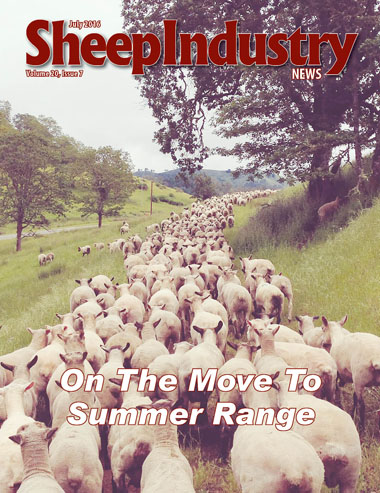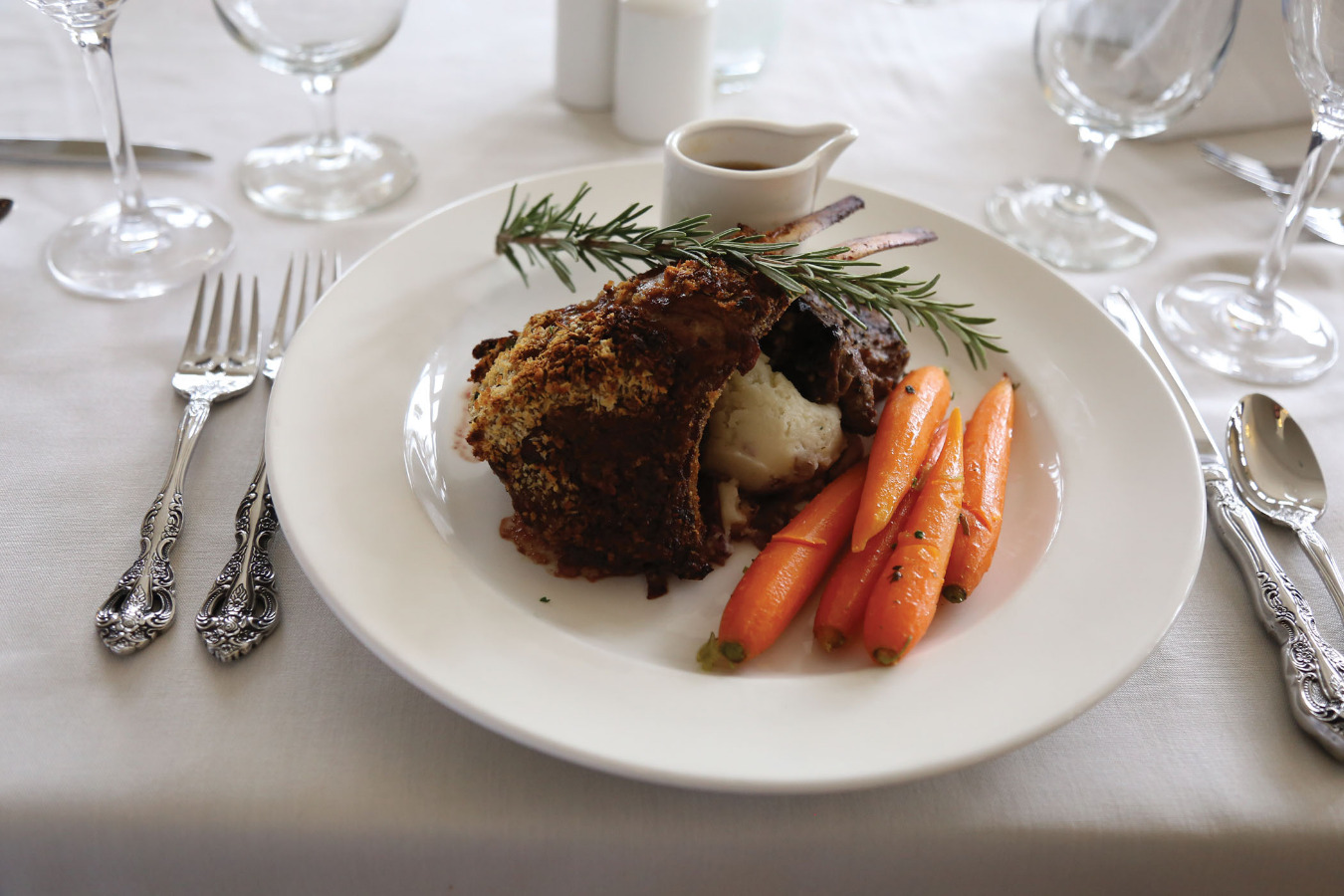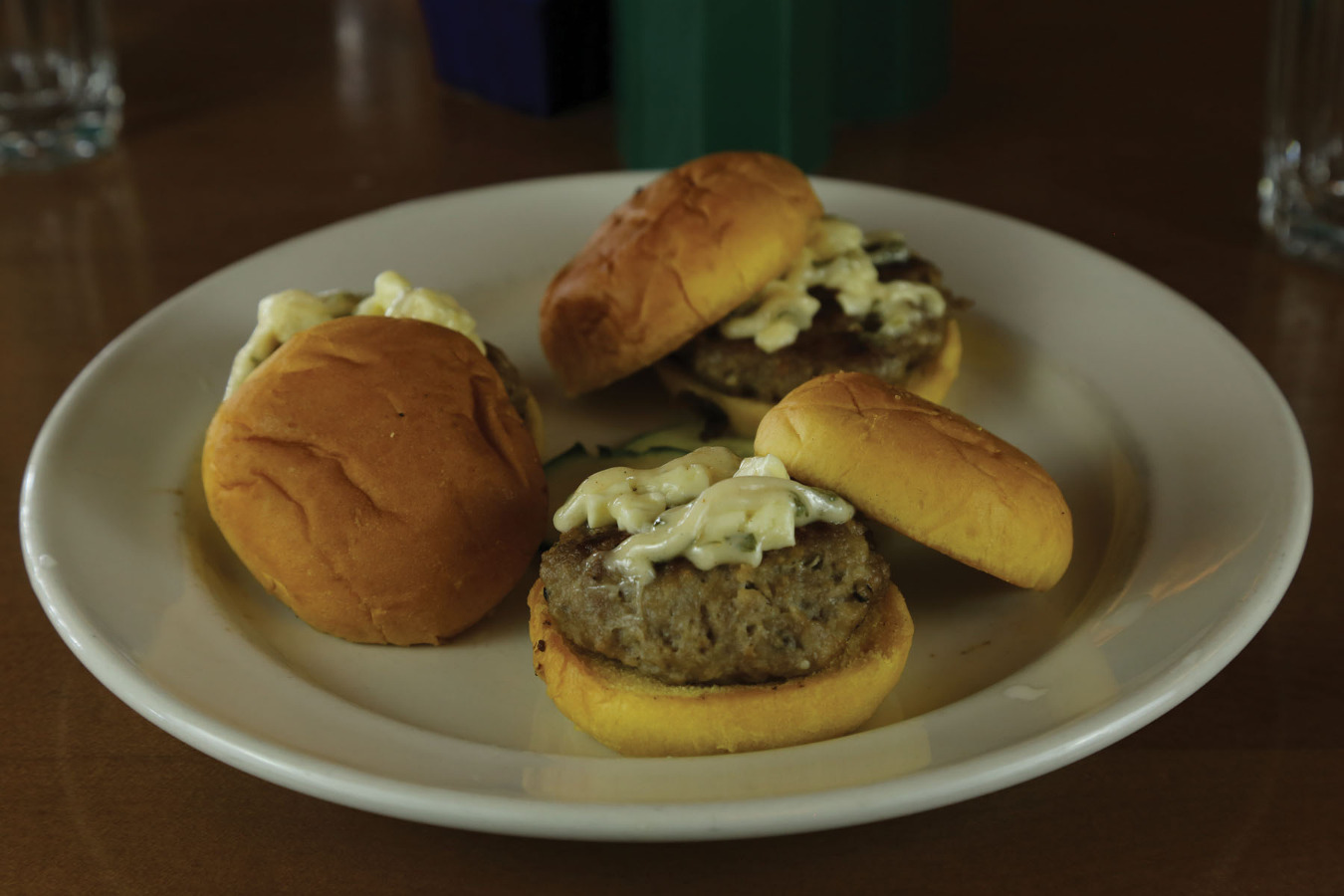
- July 2016
- President’s Notes
- Yellowstone Menus Offer Lamb
- ASI Comments on Behalf of USSES
- ASI Photo Contest
- Industry Recommends Research Priorities
- Sheep Center Sets Grant Deadline
- Sale Strengthens Lempriere
- Appropriations Update from Washington, D.C.
- Guaranteed for Life
- Young Entrepreneur: Sarah Spear
- CSU Vet Team Works Wyoming Ranch
- NSIP Offers Producers Online Tools
- Obituary
- Market Report
- Around the States
- The Last Word
Yellowstone Menus Offer Lamb
KYLE PARTAIN
Sheep Industry News Editor
Millions of tourists descend on northwest Wyoming each year to visit Yellowstone National Park. While a fair number of them will limit their meals to burgers and hot dogs cooked over an open flame at their campsite, quite a few will enjoy fresh lamb thanks to the park’s continued use of sustainable ingredients.
 Montana Natural Lamb is one of two lamb producers (Wolf Ridge Lamb and Wool is the other) based in Big Sky Country that provide lamb to restaurants in the park. Guests can choose from nearly half a dozen lamb dishes on menus at the park’s various dining rooms.
Montana Natural Lamb is one of two lamb producers (Wolf Ridge Lamb and Wool is the other) based in Big Sky Country that provide lamb to restaurants in the park. Guests can choose from nearly half a dozen lamb dishes on menus at the park’s various dining rooms.
The Lake Yellowstone Hotel, Canyon Lodge and Mammoth Hotel serve Montana Natural Lamb with choices ranging from a dijon panko-crusted frenched rack lollipop and loin chop to a lamb burger, sliders or fettuccine with tomato lamb ragout.
“Our entire food and beverage team is committed to providing the highest quality food while minimizing our environmental footprint as much as possible, and those combined objectives have resulted in some seriously innovative and popular menu options,” said Jim McCaleb, general manager of Yellowstone National Park Lodges. “And we know that we are not only contributing to the health of our guests, we are also contributing to a healthier planet by supporting local farmers and food systems.”
Montana Natural Lamb is one such partner in the process. The company consists of three separate ranches – the Svenson Ranch, Crazy Mountain Cattle Company and the Halverson Ranch.
“Montana Natural Lambs are fed a vegetarian diet and never given any antibiotics or growth hormones,” states the company’s website. “Our lambs are grass fed and finished on a grain-based diet to ensure our customers receive the highest quality, consistent meat product. The lambs are hand selected for harvest when they have reached their physical prime and have met our standards for consistency and size.
“The lambs are transported just down the road to a local, family-owned, government-inspected meat processing facility for harvest. They are our partners in making sure our customers receive a quality, wholesome and safe product.”
The southwestern Montana producers made contact with Yellowstone through the Western Sustainability Exchange in Livingston, Mont.
“The park service mandates that Yellowstone gradually increases the local and organic food it offers in the park,” says Harv VanWagoner of Crazy Mountain Cattle Company. “We met their criteria for local, so we’ve been able to get in there and they’ve been a pretty good customer.”
Montana Natural Lamb officially formed in 2010 as a cooperative of producers, but later found that the mechanics of that arrangement didn’t work. The group has since reformed as a limited liability company, and focuses on producing high-end lamb that offers a consistent taste regardless of when the lamb is purchased.
“We follow a protocol for feeding that means if you buy a lamb in January, it will taste the same as a lamb bought in June,” says Rick Jarrett, also with Crazy Mountain Cattle Company. “There’s only one way to do that when you’re raising lamb in Montana and that’s with a consistent diet.”
The group has roughly 3,000 ewes and markets  about 20 to 25 percent of its lamb through the Yellowstone partnership. The remainder go to grocery stores and restaurants all across Montana.
about 20 to 25 percent of its lamb through the Yellowstone partnership. The remainder go to grocery stores and restaurants all across Montana.
“A crossbred lamb is the best lamb we can put in the feedlot,” says VanWagoner. “They just gain weight the best and are more consistent. We like a Targhee or Rambouillet crossed with a Suffolk or Hampshire buck. That works best for us.”
Fourth-generation rancher Kevin Halverson says the program has proven to be a beneficial way to market his ranch’s lambs.
“It’s nice to have that customer base,” he says. “It seems like it’s so hard to add a lot of value with anything you do these days. Things sound easy to do sometimes, but once you get started you realize how hard it is to get it off the ground. If it was easy, everybody would be doing it.
“I’d say our persistence has paid off.”
In the 1990s, Halverson remembers nearly a dozen producers coming together to form Sweet Grass Natural Lamb.
“It was just a loose knit group of people, but that progressed to what we have now,” he says. “We’re always looking for ways to get more for the lamb. I probably should get down there and check it out, but I’m always too busy at the ranch just trying to make a living.”
For Montana Natural Lamb producers, the best way to ensure their livelihoods is to produce the best lamb possible.
“We started out with a guarantee of ‘No bad bites,’” Jarrett says. “A bad bite of lamb can turn a customer away for the rest of his life. One bad bite will get more press than a million good ones.”
To learn more, visit MontanaNaturalLamb.com.
Wolf Ridge Lamb and Wool
Montana Natural Lamb isn’t the only lamb producer selling directly to Yellowstone National Park. Wolf Ridge Lamb and Wool of Montana’s Paradise Valley also supplies fresh lamb to restaurants in the park. Park visitors can dine on braised lamb, roasted root vegetables, creamy polenta and fried leeks at the Old Faithful Snow Lodge Obsidian Dining Room.

